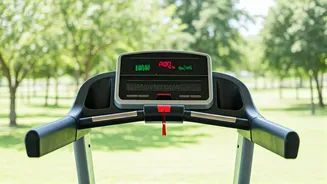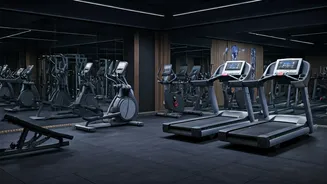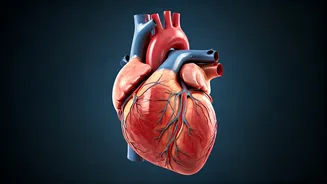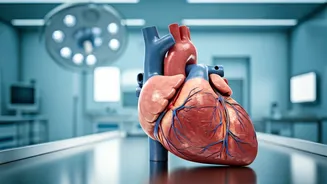The Best Exercise
A leading cardiologist has pinpointed the ideal exercise to combat high blood pressure. According to the expert, a combination of aerobic and resistance
exercises is the most effective. Aerobic exercise, such as brisk walking, running, or swimming, helps to strengthen the heart and improve its efficiency, thus lowering blood pressure. Resistance training, which involves using weights or bodyweight exercises, builds muscle, which in turn helps regulate blood pressure. The doctor suggests a balanced routine including both components for optimal results. Engaging in these exercises regularly can significantly contribute to better heart health and a lower risk of cardiovascular disease. The blend of both aerobic and resistance training provides a powerful, natural way to manage and reduce high blood pressure. This approach can be integrated into your daily routine for noticeable health benefits.
Aerobic Exercise Benefits
Aerobic exercises play a crucial role in reducing blood pressure because they directly improve cardiovascular function. Activities like running or cycling increase heart rate and breathing, which strengthens the heart muscles. When the heart becomes stronger, it pumps blood more efficiently, decreasing the pressure needed to circulate blood throughout the body. The cardiologist recommends at least 150 minutes of moderate-intensity or 75 minutes of vigorous-intensity aerobic exercise per week. These could include activities such as jogging, swimming, or dancing. Over time, regular aerobic exercise can lead to improved blood vessel health and overall cardiovascular efficiency, supporting the natural management of high blood pressure and enhancing overall wellness. Consistent aerobic exercise offers a natural and accessible way to boost cardiovascular health and lower blood pressure.
Resistance Training’s Role
Resistance training is also a vital component in blood pressure management, offering unique benefits that complement aerobic exercise. Weightlifting, bodyweight exercises, and resistance band workouts build muscle mass. Muscle growth helps regulate blood pressure because muscles consume more energy and may aid in improving insulin sensitivity, which in turn influences blood pressure levels. The cardiologist emphasizes the importance of integrating resistance training at least twice a week. This should involve exercises that target different muscle groups. Examples include squats, push-ups, and lifting weights. By integrating resistance training, individuals can improve their muscle mass, metabolic health, and blood pressure levels. This approach complements aerobic exercise to provide a comprehensive strategy for natural blood pressure management.
Creating a Routine
To effectively lower blood pressure, it's vital to create a consistent exercise routine. The cardiologist advises starting slowly and gradually increasing intensity and duration. Begin with a warm-up, followed by the chosen exercises, and finish with a cool-down. A typical routine might include 30 minutes of brisk walking or jogging, combined with resistance exercises such as squats and push-ups, performed two to three times per week. Monitoring blood pressure regularly helps track progress. It is advisable to consult a healthcare professional before starting any new exercise program, especially if you have existing health conditions. Consistency is key; integrating exercise into your daily life can lead to significant improvements in blood pressure and overall cardiovascular health. A well-structured routine, combining aerobic and resistance exercises, is a powerful tool in achieving natural blood pressure management.
Diet and Lifestyle
Alongside exercise, adopting a healthy diet and lifestyle is essential for controlling blood pressure. The cardiologist suggests following the Dietary Approaches to Stop Hypertension (DASH) diet, which emphasizes fruits, vegetables, whole grains, and lean proteins while limiting sodium, saturated fats, and added sugars. Regular monitoring of sodium intake is advised because excess sodium raises blood pressure. Staying hydrated, managing stress, and getting adequate sleep also greatly support blood pressure management. Limiting alcohol consumption and avoiding smoking are crucial steps. A comprehensive approach, combining exercise, a balanced diet, and healthy lifestyle choices, maximizes the positive impact on blood pressure levels and overall health. Such lifestyle modifications help to naturally reduce blood pressure and enhance overall well-being, complementing the benefits of regular exercise.
Monitoring Your Health
Regularly monitoring your blood pressure is important to track progress and adjust your strategies as needed. Using a home blood pressure monitor can provide readings to track over time. Taking your blood pressure at the same time each day offers the most accurate results. Consult with your healthcare provider to discuss your readings and ensure that your approach aligns with your health goals. They can provide personalized advice and make adjustments to your exercise and lifestyle plan. Regular monitoring and open communication with your doctor empower you to take an active role in managing your health. This proactive approach helps to ensure that your efforts are effective and contributes to long-term cardiovascular well-being. Keeping tabs on your blood pressure helps in taking timely and informed decisions related to health.













